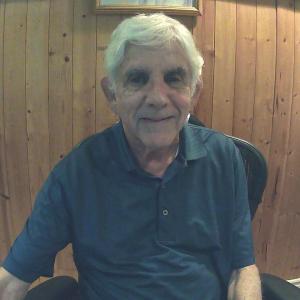- Home
- Health & Fitness
- The Painful Truth: What Chronic Pain Is Really Like and Why It Matters to Each of Us Reviewed By Norm Goldman of Bookpleasures.com
The Painful Truth: What Chronic Pain Is Really Like and Why It Matters to Each of Us Reviewed By Norm Goldman of Bookpleasures.com
- By Norm Goldman
- Published May 27, 2015
- Health & Fitness

 Norm Goldman
Norm Goldman

Reviewer & Author Interviewer, Norm Goldman. Norm is the Publisher & Editor of Bookpleasures.com.
He has been reviewing books for the past twenty years after retiring from the legal profession.
To read more about Norm Follow Here
Author: Dr. Lynn R. Webster
Publisher: Webster Media LLC
ISBN: 978-0-9861407-0-9
Review of Arc Copy
The relief of pain and suffering is a core ethical duty for medical professionals, unfortunately, and according to Dr. Lynn R. Webster author of The Painful Truth: What Chronic Pain Is Really Like and Why It Matters to Each of Us people in pain are regularly underserved because the system in many instances works either too slowly, inadequately and sometimes not at all. As it turns out, there are some one hundred million adults in the USA suffering mild to severe chronic pain making it America's largest invisible epidemic according to the Institute of Medicine-the health arm of the National Academy of Sciences in a report it delivered in 2011.
The objective of The Painful Truth is to leave the readers with a plan and a rationale for a society-wide shift in attitudes towards people that suffer chronic pain, which is at present the number-one health problem in the USA. Because pain, as Dr. Webster states, is such a broad-based experience, it thus requires a broad-based approach to healing.
In the first part of the book entitled Hope for Healing Dr. Webster presents the stories of eight real-life people whom he has dealt with pertaining to their chronic pain. These stories provide helpful information that readers can immediately use to better understand the pain experience and to seek healing. The cases expose the kinds of misconceptions people with pain experience, how chronic pain affects family and other relationships, kinds of losses that come with pain, how great is the risk that certain pain treatments may lead to addiction, what works to wean a person off an addicting medication while still managing the pain, the impact upon a family member that may be assuming the role of caregiver to a person in pain, how can someone in pain take a proactive role in getting the best help possible, and what kinds of unsought rewards can a battle against pain give back.
As we discover, all of these patients have experienced excruciating pain caused by all kinds of unfortunate events such as the Trolley Square Mall shooting in Salt Lake City which occurred in 2007 where a lone gunman killed five bystanders and wounded four others. One of the seriously wounded was a patient of Dr. Webster whom he initially met on vacation in France. This poor woman lost her youngest daughter who died in her arms at the time of the shooting and also had the back of her right shoulder shot off sending pellets deep into her chest, piercing her right lung and shearing the brachial nerves that extend from the neck to the arm. You can well imagine the horrendous pain she felt subsequent to the loss of a child and her own emotional suffering. The other seven examples likewise illustrate that chronic pain involves more than hurt but also can take control over the way we live.
Part two of the book discusses the problems and limitations in our current-day treatment of pain as well as the cultural transformation required if we ever hope to take away people's pain.
From reading this book one can very well see how compassionate Dr. Webster is in caring for his patients during their most difficult moments. This is quite noticeable in his conversations and treatments with his patients where he tries to balance realism in their need for hope. The book's concluding comments puts it all in perspective when Dr. Webster's keen observation concerning the weakness of our society and its failure in treating people in pain shamefully. This is an intelligent wake up call in acknowledging that we are not doing nearly our best to get them the treatment they need, and often look at them askance when they try to do their best for themselves within the system as it exists today.
It should be pointed out that The Painful Truth is not a self-help book but rather, as Dr. Webster states, a book that was written to share with its readers the humanity involved with people in pain that is very often absent in our cultural understanding of pain. And Dr. Webster is the ideal person to write such a book as he is an anaesthesiologist specializing in pain medicine. He is vice president of scientific affairs for PRA Health Sciences, a leading international medical research organization. He was formerly the founder of Lifetree Clinic and Lifetree Clinical Research, both in Salt Lake City, Utah and was president of the American Academy of Pain Medicine in 2013-14.
Follow Here To Read Norm's Interview With Dr. Lynn R. Webster